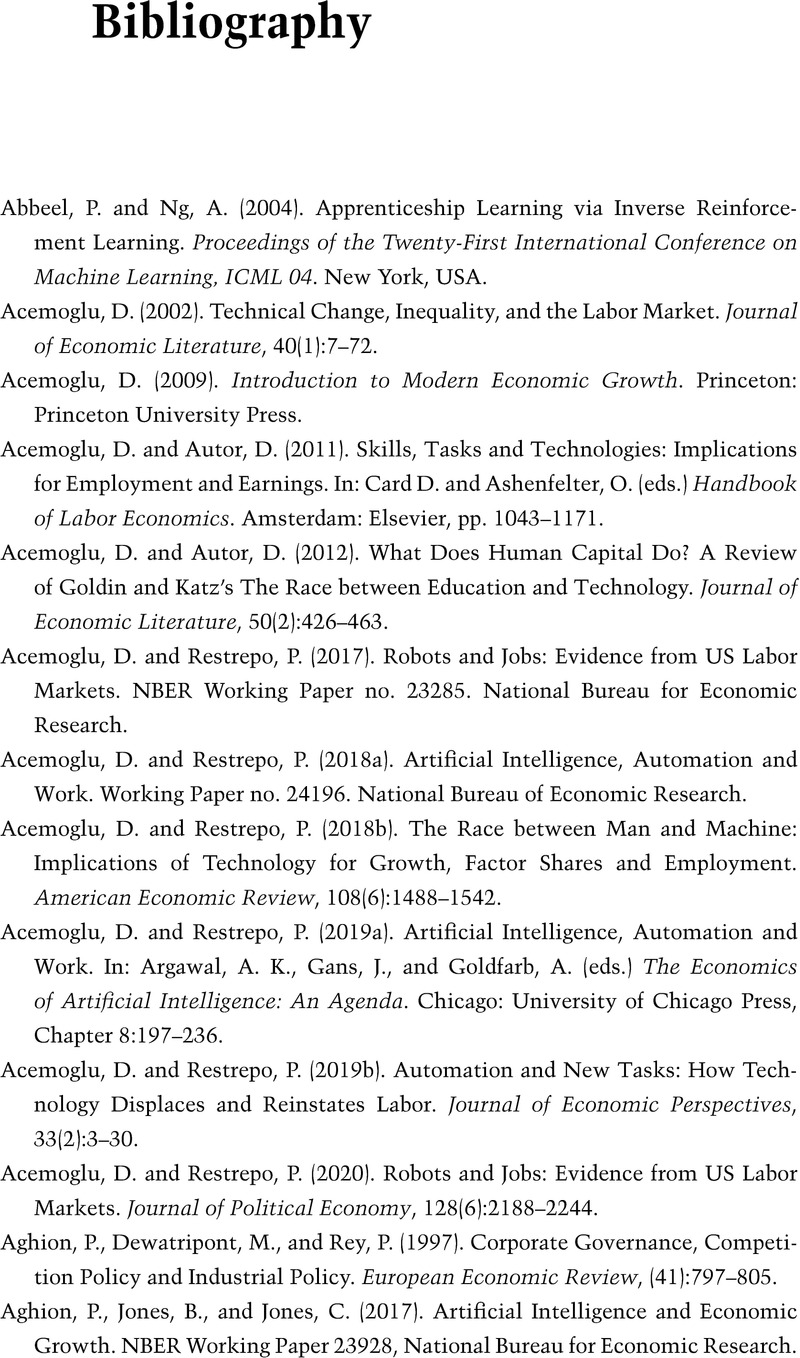Book contents
- Frontmatter
- Contents
- Figures
- Tables
- About the Authors
- Preface
- 1 Introduction
- 2 Artificial Intelligence and Economics
- 3 Artificial Intelligence and the Economics of Decision-Making
- 4 Artificial Intelligence in the Production Function
- 5 Artificial Intelligence, Growth, and Inequality
- 6 Investing in Artificial Intelligence
- 7 Artificial Intelligence Arms Races as Innovation Contests
- 8 Directing Artificial Intelligence Innovation and Diffusion
- 9 Artificial Intelligence, Big Data, and Public Policy
- 10 The Future of Artificial Intelligence and Implications for Economics
- Bibliography
- Index
- References
Bibliography
Published online by Cambridge University Press: 23 May 2024
- Frontmatter
- Contents
- Figures
- Tables
- About the Authors
- Preface
- 1 Introduction
- 2 Artificial Intelligence and Economics
- 3 Artificial Intelligence and the Economics of Decision-Making
- 4 Artificial Intelligence in the Production Function
- 5 Artificial Intelligence, Growth, and Inequality
- 6 Investing in Artificial Intelligence
- 7 Artificial Intelligence Arms Races as Innovation Contests
- 8 Directing Artificial Intelligence Innovation and Diffusion
- 9 Artificial Intelligence, Big Data, and Public Policy
- 10 The Future of Artificial Intelligence and Implications for Economics
- Bibliography
- Index
- References
Summary

Information
- Type
- Chapter
- Information
- Artificial IntelligenceEconomic Perspectives and Models, pp. 315 - 353Publisher: Cambridge University PressPrint publication year: 2024
